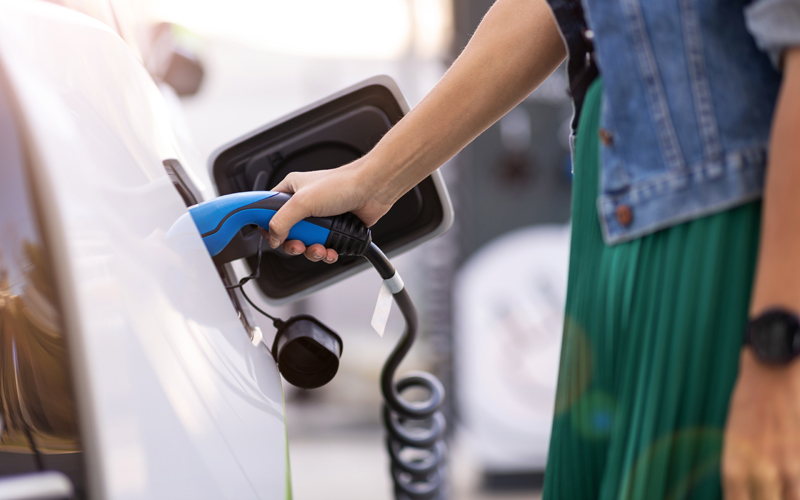- Your Money & Your Life
- Posts
- The Treasurer's doom and gloom annoys me + are EVs worth it?
The Treasurer's doom and gloom annoys me + are EVs worth it?
My Money Digest - 17 May 2024

Hi everyone,
Greetings from Malta as Libby and I (and nine of our good mates) finish our two-week trip around Sicily and Malta… we fly back home on the weekend.
But a huge week in the world of finance with Jim Chalmer’s Federal Budget dominating the agenda. As usual it has been wall-to-wall coverage across the media and I know it can be overwhelming with everyone having their say.
So at the end of the week here are my quick thoughts.

The doom and gloom from the Treasurer really annoys me
I know he wants us to stay in the bunker and not party with our spending to bring inflation down. However…
Yes, the economy is fragile, but it’s not too bad.
We’re still only one of nine countries with an AAA rating from all international credit ratings agencies and we’re still pumping out budget surpluses ($20 billion this financial year and $9 billion next financial year) which, as you can see from this chart is rare.

Most advanced countries in the world are adding to their debt with budget deficits. I know the forward budget projections are for future deficits, but if commodity prices remain at these levels there is every likelihood of surpluses.
Can we believe the budget anyway?
As you all know, I think it is appalling how governments rig the Federal Budget by severely underestimating the income they will earn.
With just a month left in this financial year, this government says they will make a $9.3 billion Budget surplus. But in their Budget this time last year they were predicting a $13.9 billion deficit and even five months ago in the mid-year update they forecasted a $1.1 billion deficit.
If you or I got our family budget this wrong the bank wouldn’t approve any sort of loan. It’s disgraceful. It makes a mockery of the Budget.
How do they get it so wrong?
They underestimate the income they will earn over the next year from our two biggest exports: iron ore and coal. The Budget assumes iron ore exports will sell for $US60 a tonne and thermal coal exports for $US70 a tonne; iron ore currently sells for $US116 a tonne and thermal coal at $US120 a tonne.
If you or I underestimated our income by that much the Tax Office would hit us with a huge fine.
Last year I called out the Treasurer on his $13.9 billion budget deficit prediction and bet him a bottle of red wine that he’d end up with a healthy budget surplus. He hasn’t paid up.
But that’s not the point. Budgets have to be honest and give us a realistic assessment of the nation’s finances and a clear financial blueprint of the next 12 months. Not talk the economy down and build a huge slush fund of cash from underestimating income.

You can’t rig the inflation figure to reduce interest rates
Reserve Bank Governor, Michele Bullock, has been warning that inflation is staying stubbornly high and taking longer to bring back within the 2-3 per cent target range than originally thought. The effect is that interest rates will have to stay higher for longer.
Two of the big drivers of inflation are energy prices and rent increases.
So the Budget provides a $300 power rebate for every household ($325 for small business) and increases rent assistance by another 10 per cent. Add in state-based subsidies and these two inflation drivers will drop significantly.
That’s why the Treasurer is saying he expects inflation to drop to within the RBA target band before the end of the year but the RBA reckons it will be mid next year. The expectation is that when inflation does get to within 2-3 per cent then interest rates will fall.
I think the RBA won’t be fooled by a government manipulating the inflation rate by artificially providing short term subsidies.
The risk is that these two subsidies, combined with the 1 July tax cuts could in fact fuel inflation as it puts more money into the pockets of consumers. As you can see, it is very high-risk.
The Budget housing policies are not the silver bullet to solve the crisis
The Budget outlines a new $11.3 billion “Homes For Australia” plan to solve the current housing shortage crisis. That’s made up of $9.3 billion over five years to combat homelessness and repair and build social housing; $1 billion for road and sewer infrastructure; and $1 billion for crisis and transitional accommodation for women and children fleeing domestic violence.
That sounds like a lot of money. But it will be years before anything comes down the pipeline from this plan (and remember, building approvals are at 10-year lows).
Let me remind you again of how this problem has been building for decades because of government neglect (at all levels).

Source: Ray White
The amount of government built and owned rental stock has been declining for decades and they’ve just now decided to investment in it… too little, too late.
The global boom in solar energy… it is worth chasing
With the focus of the Labor Government on boosting our solar production capability I was interested in a story in the Bondi Partners newsletter (Joe Hockey’s consultancy group).
According to energy think tank Ember, renewable energy accounted for 30 percent of global electricity production in 2023, setting a new record. While the majority of renewable energy generation came from hydropower, solar power was the fastest growing source following a record surge in installations at the end of 2023.
Despite the record-setting growth in clean energy power generation, fossil fuels remained the number one source of global electricity generation. However, forecasts indicate that 2023 was a “pivot point” and growth and adoption of renewable energy would continue increasing at its current pace or even faster.
According to Ember’s current analysis, electricity generated from solar was expected to double by this same time next year, while fossil fuels are expected to drop by 2 percent.
From an investment point of view, fossil fuels will be used for a long time to come but solar power is leading the renewable transformation.

Source: Ember

Tax Office targets for your returns this year
Every year, ahead of tax time, the ATO releases its target areas – what it’s going to pay extra attention to. It is always a timely warning.
This year they will be taking a close look at three common errors being made by taxpayers:
Incorrectly claiming work-related expenses
Inflating claims for rental properties
Failing to include all income when lodging
Work-related expenses
In 2023 more than 8 million people claimed a work-related deduction, and around half of those claimed a deduction related to working from home.
Last year, the ATO revised the fixed rate method of calculating a working from home deduction to broaden what is included. They increased the rate you use to calculate your expenses and adjusted the kind of records you need to keep.
These changes are in full effect this financial year, meaning you must have comprehensive records to substantiate your claims as you would for any other deduction.
To use this method, you need records that show the actual number of hours you worked from home (like a calendar, diary or spreadsheet), and the additional running costs you incurred to claim a deduction (like a copy of your electricity or internet bill).
Your deductions will be disallowed if you’re not eligible or you don’t keep the right records.
Remember, there are three golden rules for claiming a deduction for any work-related expense:
You must have spent the money yourself and weren’t reimbursed
The expense must directly relate to earning your income
You must have a record (usually a receipt) to prove it
Rental properties
Rental properties continue to remain in the ATO’s sights. Their data shows nine out of 10 rental property owners are getting their income tax returns wrong.
They often see landlords making mistakes when it comes to repairs and maintenance deductions on rental properties, so the ATO is keeping a close eye on this.
They’re particularly focused on claims that may have been inflated to offset increases in rental income to get a greater tax benefit.
Performing general repairs and maintenance on your rental property can be claimed as an immediate deduction. However, expenses which are capital in nature (like initial repairs on a newly purchased property and any improvements during the time you hold the property) are not deductible as repairs or maintenance.
You can claim an immediate deduction for general repairs like replacing damaged carpet or a broken window. But if you rip out an old kitchen and put in a new and improved one, this is a capital improvement and is only deductible over time as capital works.
Get it right - wait to lodge
As part as its third focus on keeping accurate records, the ATO is also warning against rushing to lodge your tax return on 1 July. If you have received income from multiple sources, you need to wait until this is pre-filled in your tax return before lodging.
They see lots of mistakes in July where people have forgotten to include interest from banks, dividend income, payments from other government agencies and private health insurers.
For most people, this information will be automatically pre-filled in their tax return by the end of July. This will make the tax return process smoother, save you time, and help you get your tax return right.
By lodging in early July, you are doubling your chances of having your tax return flagged as incorrect by the ATO.
Does the “sell in May and go away” share investment strategy really work?
One of my favourite newsletters I receive is Jon Erlichman’s Ticker Take newsletter which focuses on the US market and stocks.
This week he tested the relevance of the “sell in May and go away” adage which is based on the theory that the (northern hemisphere) summer months historically have seen lower returns than the rest of the year. The seasonal concept suggests selling stocks ahead of the May to October stretch, in favour of investing between November and April.
Considering the S&P 500 had started to look wobbly after gaining roughly 25 percent off its autumn lows, Jon decided to look at how helpful this adage is in practice.
He looked back at S&P 500 performance since the financial crisis in 2008.
In reviewing 16 years’ worth of data, he found six years during which overall performance was better when investors were out of the market between May and October – 2023, 2022, 2015, 2011, 2010 and 2008 – or just over a third of the time. The quick conclusion would have to be that selling in May doesn’t pay most of the time.
In addition, looking closer at those six years he cited, there were two years – 2010 and 2015 – where the outperformance from selling in May was only marginally better. So, if you take those years out of the equation, the “sell in May” strategy has really only worked 25 per cent of the time since 2008.

Do the financials behind buying an electric vehicle really stack up?
Australian motorists could save thousands of dollars on running costs and loan repayments by making their next car purchase electric, according to new research from Compare the Market (where I am Economic Director).
The insurance comparison site crunched the numbers and found that EV owners in Sydney and Brisbane spent between $897 - $1,536 less a year on car running costs compared to petrol car owners.
The research compared the popular electric BYD Atto 3 with the petrol Toyota Corolla Cross small SUV across a range of regular expenses, including fuel and charging costs, registration, servicing, insurance and loan repayments.
As a percentage, estimated running costs for the EV were between 5.4 - 9.3 per cent lower than estimates for the petrol car included in this study.

Image: Compare the Market

Image: Compare the Market
The arrival of cheaper models has meant owning an EV is now a more cost-effective choice.
If you’re tossing up between a petrol, hybrid, or EV for the next family car, the research shows that EVs are not only the greener choice, but the more economical option too.
There seems to be a misconception that EVs are more expensive to run. While this may be true in some respects (such as comprehensive car insurance costs), significant savings in fuel and loan repayments do more than offset these expenses.
Regular drivers could save over $1,000 just on fuel annually when they charge their EVs at home overnight.
The next big area for saving was on car loans. Even with a slightly higher drive-away purchase price for the electric BYD – just under $2,000 more than the petrol-powered Toyota – loan repayments on the Atto 3 turned out to be cheaper due to the discounted rates available for green loans.
Lenders are rewarding customers who make greener choices. The difference between regular rates and ‘green rates’ could be up to 2.47 per cent, so depending on the cost of your car that could mean hundreds of dollars a year.
Despite savings across most regular expenses, EVs do remain more expensive to insure because they use different technology and usually require specialist expertise for repairs.
The Compare the Market experts found a $563 difference between average comprehensive cover costs in Brisbane and a $591 gap between average costs in Sydney.
The best way to ensure you’re getting a good deal is to compare. No matter if it’s the fuel that you put in your car or the electricity plan you’re on to charge your EV, there are options out there.



